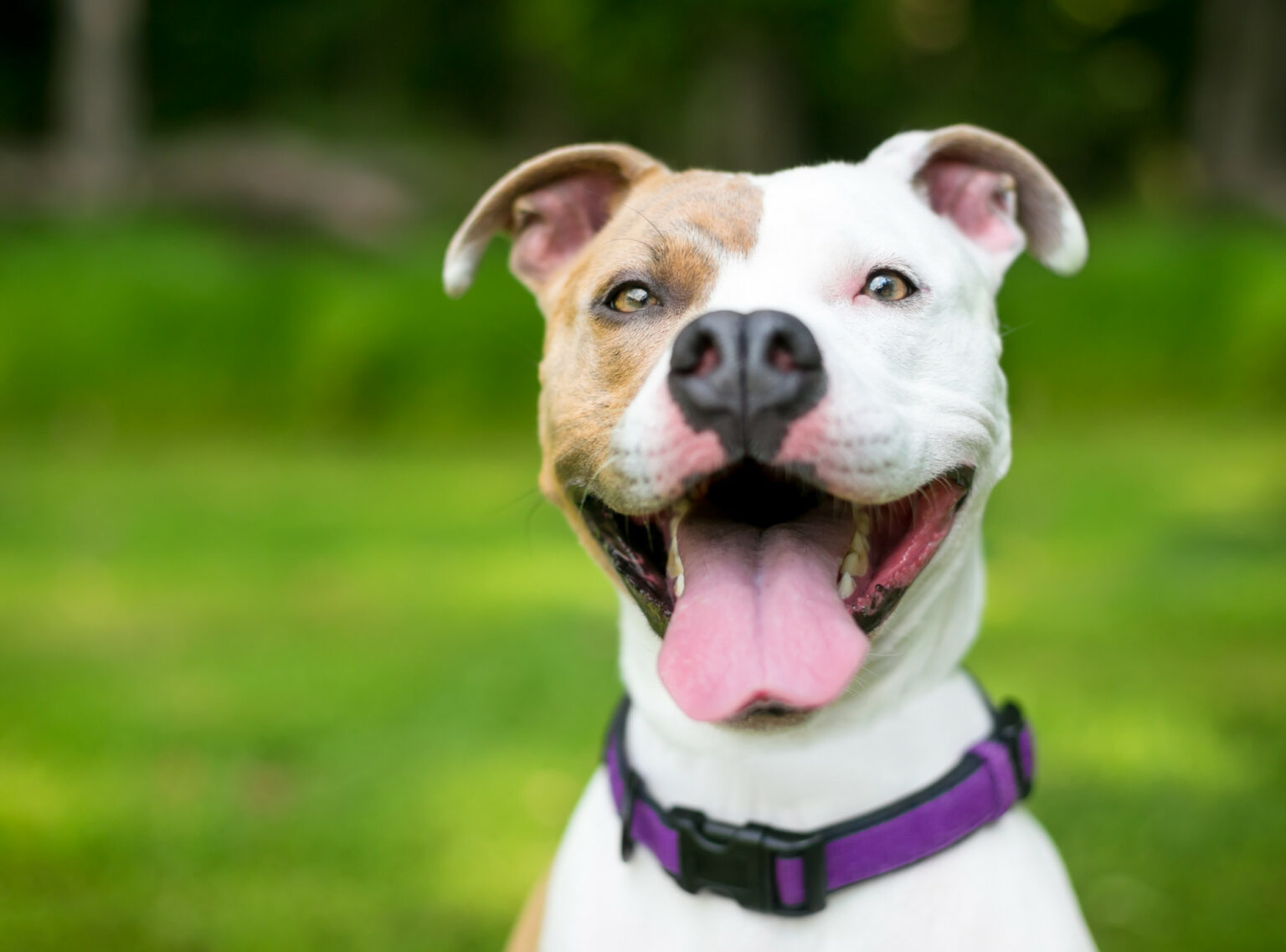Did you know that according to the American Pet Products Association, a poll from 2021-2022 found that 70% of homes had pets? Among those, 69 million American families own at least one dog. Suffice it to say, we love our dogs!
We all want to make sure our furry friends are comfortable and safe, but it can be hard to know how tight a dog collar should be: too loose and your pup could slip out of their collar, too tight and you risk causing discomfort or even injury, especially to dogs with sensitive tracheas. It’s important to get the fit just right!
Fortunately, there is an easy way to determine the ideal tightness for your pup’s collar. Keep reading for some things you will want to consider so that you can ensure that your pup stays safe and happy while wearing his – or her – collar.
Risks of a Dog Collar Being Too Loose or Too Tight
When a dog collar is too tight, it can cause pain, chafing, and difficulty breathing. This could lead to possible injuries or, in extreme cases, even death if not addressed quickly. On the other hand, if the collar is too loose, your pup may be able to slip out of it easily and get lost. It’s important to check your pup’s collar regularly and adjust the tightness as needed.
Two-Finger Rule
The two-finger rule is the best way to test if your pup’s collar is the right tightness. Place two fingers between the dog’s neck and the collar while lightly pulling back on it. If you can fit two fingers comfortably under the collar, then the collar is likely a good fit!
Other Important Considerations
It is important to keep in mind that all dogs are different, depending on age, type of coat, and activity level. Care should be taken if you are borrowing a collar or using a collar that your dog hasn’t worn in awhile.
Make sure to check the tightness of your pup’s collar regularly and adjust as needed so your pup stays safe and comfortable! This is especially important if you have a growing puppy or if your adult dog is entering his senior years.
It is also important if you have a dog who receives regular grooming. For example, I have noticed that my own curly coated dog will move between two sizes of collar after he is groomed. This might also be important if your dog has a thick under-coat that is shed during warmer months.
If you have a dog with thick fur or a wider neck, you may want to consider a collar with a wide range of adjustability for the perfect fit.
It is important to be sure your pup is comfortable and safe at all times. In general, the two-finger rule is a quick way for your to ensure that your pup’s collar isn’t too tight or too loose.
How to Measure for a Dog Collar
Dog collars come in a variety of sizes depending on the breed, age, and size of your pup. To make sure you find the perfect fit, measuring your dog’s neck is essential. A soft measuring tape is ideal. You will want to measure to the tightenness that you want your dog’s collar to fit: not too tight and not too loose. The two-finger rule, noted above is generally a good rule of thumb.
Once you’ve wrapped the measuring tape around their neck and taken a quick measurement, you can use this to inform the size of collar you need. Getting an accurate measurement is important. Remember not to pull too tight or allow the measure to be sloppy and loose. Special care should be taken when measuring for a martingale collar. Please follow the manufacturers instructions carefully.
With an accurate collar measurement, you’re sure to get a fit that’s comfortable for your pup’s new fashionable dog collar!
A Few Options for Types of Collars
When choosing the perfect collar for your pup, it is important to keep in mind that there are different types of collars available, each, not only with their own benefits, but with their own standards for fit and their own sizing guidelines.
You should check the manufacturers’ guidelines when selecting the correct size collar for your dog. You will also need to consider factors such as the means by which the collar adjusts, the width of the collar, the material the collar is made of, and the design of the collar when making your selection. Let’s look at some in more detail now:
Fabric Collars
Most fabric or cloth collars have a wide range of adjustability and can be a comfortable option for many pups. They can also come with fun designs, making them popular among pet parents.
Chain Collars
Chain collars can be a great choice if you have an active pup. They are usually more durable than other types of collars and provide better control when walking. However, you will want to remove the collar when not in use, especially if you have a dog with long fur or a very active or playful dog who might get a paw tangled in the chain.
Leather Collars
A Leather collar is both stylish and strong. They can provide extra support and control if needed. They are a great choice for pups with sensitivities to synthetic materials. They may be a little more expensive than fabric or nylon collars, but their durability and the eco-friendly nature and biodegradability of leather make them an excellent choice for your pup.
Lighted Collars
Lighted collars offer a unique and easy way to keep your pup safe while out walking at night. With LED lights built right into the collar, lighted collars are an easy and hassle-free way to keep your pets visible at night. Lighted collars typically come on a nylon collar. Since nylon collars are highly adjustable, you will want to make sure that the collar is snug enough so that the collar doesn’t swivel around and shine in your dog’s eyes.
Martingale Collars
Martingale collars are designed to prevent your pup from slipping out of its collar. They work by tightening when your dog pulls, which is perfect for dogs that like to pull on the leash or have a tendency to like to back out of a standard collar.
Electronic Collars
Electronic collars are often used in training and can be very effective. These collars use electric signals to help train your pup, especially about boundaries. They should always be used responsibly and under the guidance of a professional trainer. Electronic collars (often referred to as e-collars) are often used on nylon collars, but can be placed on any type of collar. Like Lighted Collars, you will need to make sure that the collar is snug, but not tight. This will ensure that the electronic unit stays in a position that is both comfortable and effective.
Find a Dog Collar That Will Keep Your Much-Loved Pet Safe and Secure
A dog collar is more than a doggy accessory: it plays an important role in keeping your fur-baby safe. If you’re ready to discover what the best dog collar can do for you and your dog, we can help.
Auburn Leathercrafters is family owned and operated. We have been producing dog collars and dog products like pet harnesses, and dog toys since 1950 in the Finger Lakes Region of New York State.
Our favorite thing to do is create innovative dog leashes and collars. Contact us or check out our products section to see our beautiful handmade items.

